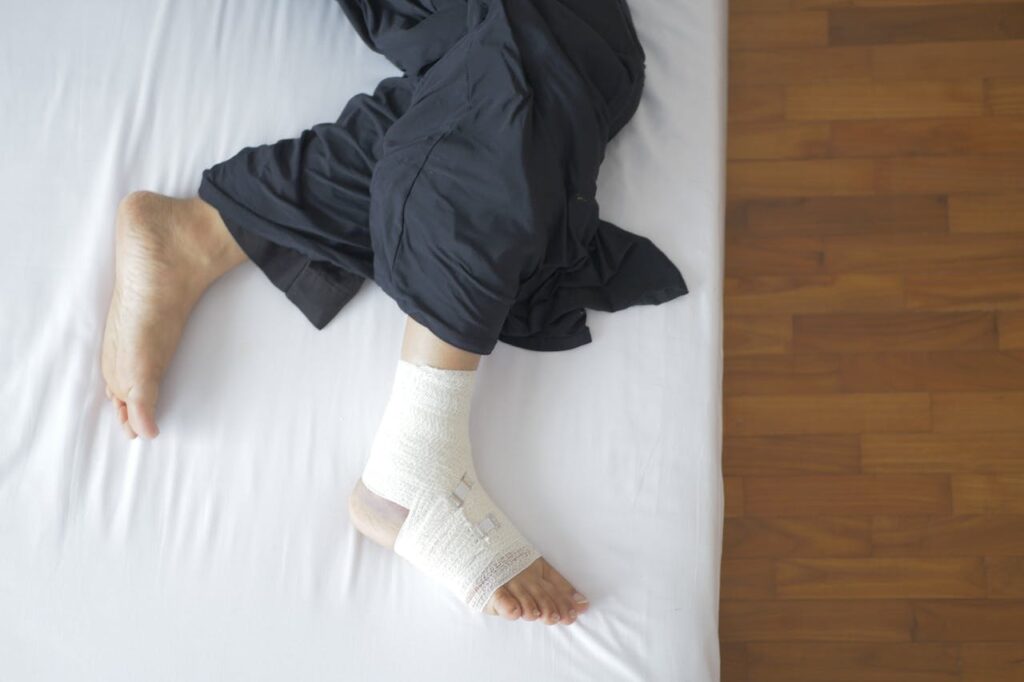Introduction:
Posterior Tibial Tendonitis is a condition that affects the posterior tibial tendon, a crucial structure that supports the arch of the foot. This disorder can lead to significant discomfort and limitations in mobility. In this blog, we will delve into the details of Posterior Tibial Tendonitis, exploring its causes, symptoms, and the best treatment options available in Richardson, Texas.
Anatomy of the Posterior Tibial Tendon
The posterior tibial tendon is a crucial component of the foot’s anatomy, playing a pivotal role in supporting the arch and facilitating smooth movement. This tendon originates from the calf muscles, running along the inside of the ankle, and attaching to multiple points on the bones of the foot. Its primary function is to maintain the arch structure, preventing it from collapsing during weight-bearing activities like walking or standing.
The posterior tibial tendon also provides stability to the foot and assists in controlling its inward rolling motion, known as pronation. Any disruption in the integrity of this tendon can lead to Posterior Tibial Tendonitis, a condition characterized by inflammation and degeneration of the tendon. Understanding the intricate anatomy of the posterior tibial tendon is crucial for grasping the mechanisms behind this painful condition.
Causes of Posterior Tibial Tendonitis
Overuse or Repetitive Stress:
Overutilization of the posterior tibial tendon is a common cause of tendonitis. Activities such as running, walking long distances, or engaging in intense physical exercises without adequate rest can strain the tendon, leading to inflammation.
Foot Structure Abnormalities:
Anatomical variations, such as flat feet (pes planus) or high arches (pes cavus), can contribute to the development of Posterior Tibial Tendonitis. These structural abnormalities alter the distribution of weight and forces across the foot, placing increased stress on the posterior tibial tendon.
Inadequate Footwear:
Wearing shoes that lack proper arch support or choosing ill-fitting footwear can contribute to the onset of tendonitis. Insufficient support can strain the posterior tibial tendon, particularly during weight-bearing activities.
Trauma or Injury:
Direct trauma or injury to the foot, such as a sprain or fracture, can damage the posterior tibial tendon and trigger inflammation. It’s essential to address injuries promptly to prevent long-term complications.
Understanding these causes empowers individuals to make informed lifestyle choices and take preventive measures to reduce the risk of developing Posterior Tibial Tendonitis.
Symptoms of Posterior Tibial Tendonitis
Pain and Swelling
The hallmark symptom of Posterior Tibial Tendonitis is pain along the inside of the foot and ankle, accompanied by swelling. This discomfort typically worsens with activity and may subside with rest and elevation.
Difficulty Walking
As the condition progresses, individuals may experience difficulty walking, especially on uneven surfaces. The pain and instability can impact mobility, emphasizing the importance of early detection and intervention.
Flattening of the Arch
In some cases, Posterior Tibial Tendonitis can lead to the gradual collapse of the foot arch, resulting in a condition known as adult-acquired flatfoot. This structural change further exacerbates the symptoms and underscores the need for timely treatment.
Diagnosis and Treatment Options
Prompt Diagnosis:
Accurate diagnosis of Posterior Tibial Tendonitis involves a thorough examination of the foot by a healthcare professional. Imaging studies, such as X-rays or MRI, may be employed to assess the extent of tendon damage and inflammation.
Rest and Ice:
In the initial stages, management often includes rest and the application of ice to alleviate inflammation. This allows the tendon to heal and reduces the risk of further damage.
Orthotic Devices:
Custom orthotic inserts are designed to provide additional support to the arch, redistributing pressure and reducing strain on the posterior tibial tendon. These devices can be instrumental in managing and preventing recurrence of the condition.
Physical Therapy:
A tailored physical therapy regimen can strengthen the muscles supporting the posterior tibial tendon. Targeted exercises improve flexibility, enhance stability, and promote overall foot function, aiding in the rehabilitation process.
Medications:
Nonsteroidal anti-inflammatory drugs (NSAIDs) may be prescribed to manage pain and reduce inflammation. These medications can be a valuable component of a comprehensive treatment plan.
Bracing or Casting:
In cases of severe Posterior Tibial Tendonitis, wearing a brace or cast may be recommended to immobilize the foot. This restricts movement, allowing the tendon to heal and regain its strength.
Surgical Intervention:
When conservative measures fail to provide relief, surgical intervention may be considered. Surgical procedures aim to repair or reconstruct the damaged posterior tibial tendon, restoring its function and alleviating symptoms.
Seeking Treatment in Richardson, Texas
Residents of Richardson, Texas, are fortunate to have access to top-notch medical care for foot and ankle disorders. Texas Foot and Ankle Consultants, located in Richardson, specialize in comprehensive care for conditions like Posterior Tibial Tendonitis. Their team of experienced podiatrists and orthopedic specialists employs the latest advancements in diagnosis and treatment to ensure optimal outcomes for their patients.
Conclusion
Posterior Tibial Tendonitis can significantly impact daily life, but with timely intervention and expert care, individuals can regain function and alleviate pain. By understanding the causes, recognizing symptoms, and exploring the treatment options available in Richardson, you can take the first steps towards a healthier, pain-free future. Remember, the experts at Texas Foot and Ankle Consultants are here to guide you through every stage of your journey to recovery.
Consult Texas Foot and Ankle Consultants for Expert Care
If you or a loved one is experiencing symptoms of Posterior Tibial Tendonitis, don’t hesitate to seek professional help. Texas Foot and Ankle Consultants are dedicated to providing the best possible care for foot and ankle disorders. Schedule a consultation today to receive personalized and effective treatment tailored to your needs.


